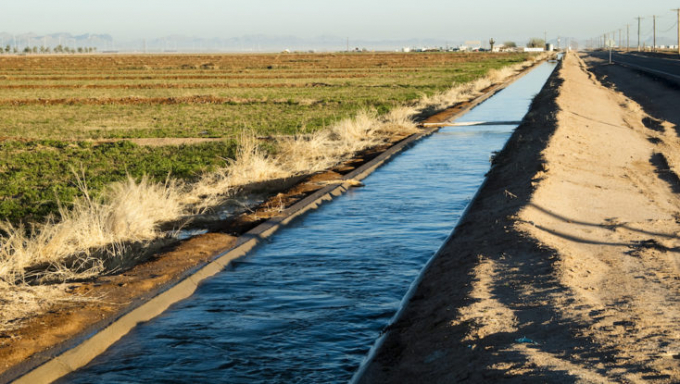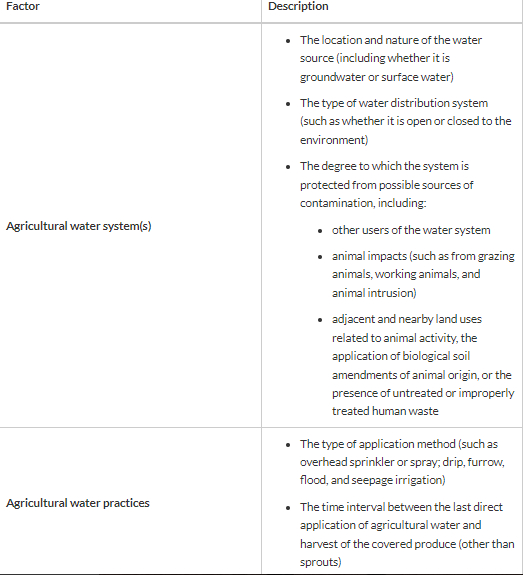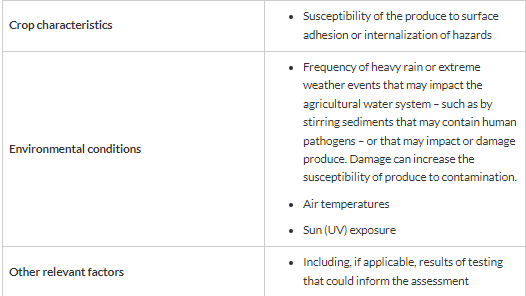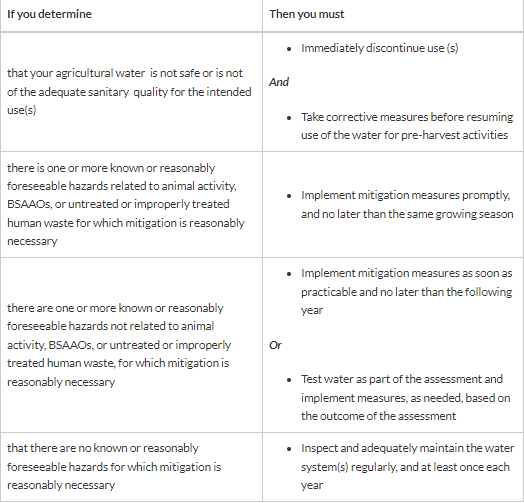June 21, 2025 | 03:05 GMT +7
June 21, 2025 | 03:05 GMT +7
Hotline: 0913.378.918
June 21, 2025 | 03:05 GMT +7
Hotline: 0913.378.918
according to the agency’s top food safety official.

“This is a game-changer,” said Frank Yiannas, FDA Deputy Commissioner for Food Policy and Response, during an interview with Food Safety News.
“These changes will result in a major shift in what industry has been doing,”
Yiannas said the proposed rule regarding agricultural water safety will use effective, modern, science-based measures designed to prevent foodborne outbreaks.
A key difference in the proposed rule is that much of the pre-harvest pathogen testing of irrigation water will no longer be required. Instead, growers would be required to annually assess a variety of possible problems and implement ways to resolve them.
As is the case now, farming operations would be inspected once a year to ensure that their risk assessment and mitigation efforts are in place. Yiannas said the Food and Drug Administration would still have the same enforcement tools. Many in the food safety community say those tools aren’t enough. A grower can be given many chances to come into compliance. Ultimately the FDA can stop the grower from selling produce until problems are resolved, which is virtually never done.
Yiannas said much of the proposed rule, as do current rules, depends on the daily monitoring and mitigation by growers.
With the proposed rule growers will be responsible for assessing the risks of everything from upstream animal operations to sunlight and rain, according to an overview published by the FDA. Once risks are identified using “science-based” assessments, there are steps outlined for growers to take, ranging from immediately stopping the use of problematic water to implementing “mitigation measures as soon as practicable and no later than the following year.”
The previous agriculture water rule for produce operations — other than sprout growing businesses that have a separate set of requirements — relied heavily on pre-harvest testing of irrigation water for E. coli. Yiannas told Food Safety News that those tests gave a false sense of security to growers and the public. He said the proposed rule, with its focus on the assessment of risks, is a more holistic approach that will better protect public health.
The current water testing rule drew a lot of pushback from industry, including the leafy greens growers, because of its perceived costs and inconveniences. With the new proposed rule, testing could be one element of a mitigation strategy designed by individual growers.
The FDA consulted with “hundreds of farmers” during the development of the new proposed rule, according to Yiannas.
“We want them to assess water systems and then determine mitigation (which can include water treatment),” Yiannas said.
For example, just knowing that there is a feedlot upstream or adjacent to a produce farm would be considered a risk and require mitigation. Yiannas did not say what that mitigation would be because such measures will be left up to the produce growers based on their specific situations.
One thing Yiannas was crystal clear about is the desired overall outcome of the proposed rule: improved public health as related to fresh produce.
“Outbreaks have become all too often associated with fresh produce,” Yiannas said. “One outbreak is one too many.”
Many of those outbreaks have been linked to leafy greens and Seattle attorney Bill Marler has represented many patients from them.
“Although today’s announcement is a bit to fully digest in one sitting, I am intrigued by FDA’s focus on pre-harvest risk assessment of water risk as opposed to water testing for pathogens generally,” said Marler, who is the publisher of Food Safety News.
“The FDA’s requirement of an annual water risk assessment by farms to ‘determine whether corrective or mitigation measures are reasonably necessary to reduce the potential for contamination,’ arguably creates a HACCP for produce. That produce HACCP requires that produce growers take stock in what pathogen risks surround them on nearby lands, like cattle operations and/or wild animal populations, and take measures to protect the produce consumer from possible contamination.
“With respect to risky adjacent land operations, it is unclear at this point what a grower can do to mitigate those risks short of relocation or treatment and testing of water, however, this rule seems to remove certain testing requirements. One method of confirming if HACCP is working can be science-based testing to help understand if your mitigation measures are in fact working.”
Current compliance dates arrive in January 2022. The FDA intends to exercise enforcement discretion for the agricultural water requirements while proposing to extend the compliance dates for all subpart E provisions applicable to such produce, with the goal of completing the compliance date rulemaking as quickly as possible. The compliance date proposal is currently under review with the Office of Management and Budget.
The agricultural water rule is part of the mandatory action Congress charged the FDA with implementing when President Obama signed into law the 2011 Food Safety Modernization Act. The initial deadline was in 2015 and that was extended to 2018-2020. Yiannas said the agency intends to have this extension be quicker than that previously enacted.
Nuts and bolts


In the overview of the proposed rule, the FDA describes some of the specifics in a couple of charts. The first covers “Factors that Covered Farms would be Required to Assess as Part of an Agricultural Water Assessment If the Proposed Rule is Finalized.”
The second FDA chart describes what farms may need to do to implement corrective or mitigation measures based on the outcomes of their pre-harvest agricultural water assessments. This could include expedited mitigation measures to address known or reasonably foreseeable hazards in agricultural water systems associated with animal activity, biological soil amendments of animal origin (BSAAOs), or untreated or improperly treated human waste on adjacent and nearby land.

(Foodsafetynews)

(VAN) Poultry production in Poland, which has only started recovering from devastating bird flu outbreaks earlier this year, has been hit by a series of outbreaks of Newcastle disease, with the veterinary situation deteriorating rapidly.

(VAN) Extensive licensing requirements raise concerns about intellectual property theft.

(VAN) As of Friday, a salmonella outbreak linked to a California egg producer had sickened at least 79 people. Of the infected people, 21 hospitalizations were reported, U.S. health officials said.

(VAN) With the war ongoing, many Ukrainian farmers and rural farming families face limited access to their land due to mines and lack the financial resources to purchase needed agricultural inputs.

(VAN) Vikas Rambal has quietly built a $5 billion business empire in manufacturing, property and solar, and catapulted onto the Rich List.

(VAN) Available cropland now at less than five percent, according to latest geospatial assessment from FAO and UNOSAT.

(VAN) Alt Carbon has raised $12 million in a seed round as it plans to scale its carbon dioxide removal work in the South Asian nation.